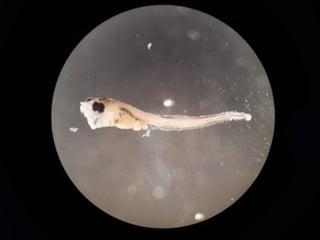I stayed at National Oceanic and Atmospheric Administration (NOAA) in Seattle from 8 April to 13 April in 2019 with funding from the ArCS program for overseas visits by young researchers. The purpose of my visit was to learn techniques on identification of ichthyoplankton in the northern Bering Sea.
In general, morphology-based species identification of larval and juvenile fish is carried out based on the external morphology, meristic and metric attributes. In the larval and juvenile stages, however, morphology and trait change during the developmental phase even for larvae belonging to the same species. In addition, literature references on these aspects are very limited. Thus, species identification has been extremely difficult for me. The information on "when and what kind of species appeared" are basic and important, especially in the polar areas where environmental changes are remarkable. Since identification of species involves responsibility for later generation, techniques for accurate species identification are required.
In this stay, I learned a lot of techniques for species identification with reference to samples that were collected in the sub-polar region. Although my visit was very short, I have had the opportunity to learn new species identification techniques, in addition to those I previously knew, having identified larval and juveniles of 39 species in 23 taxa.
Although there were unexpected incidents, such as the postponement due to the shutdown of the US government, it was a tremendous opportunity for me to collaborate and learn from experienced researchers at NOAA. Therefore, I would like to express my gratitude to ArCS program for overseas visits by young researchers for facilitating such opportunity to further hone my scientific skills.
Yuki Takemuro (Hokkaido University)






